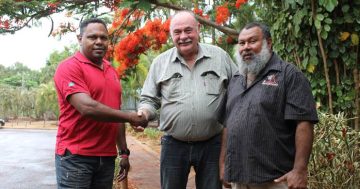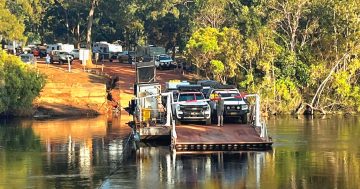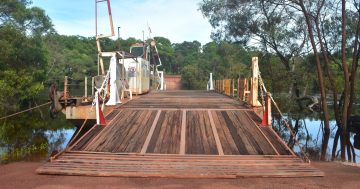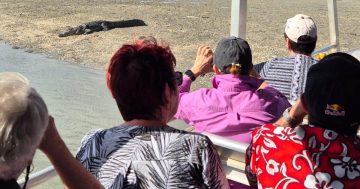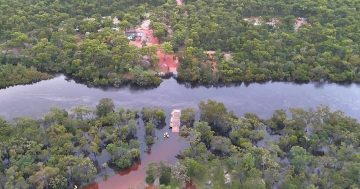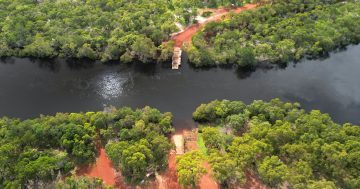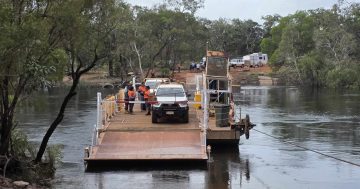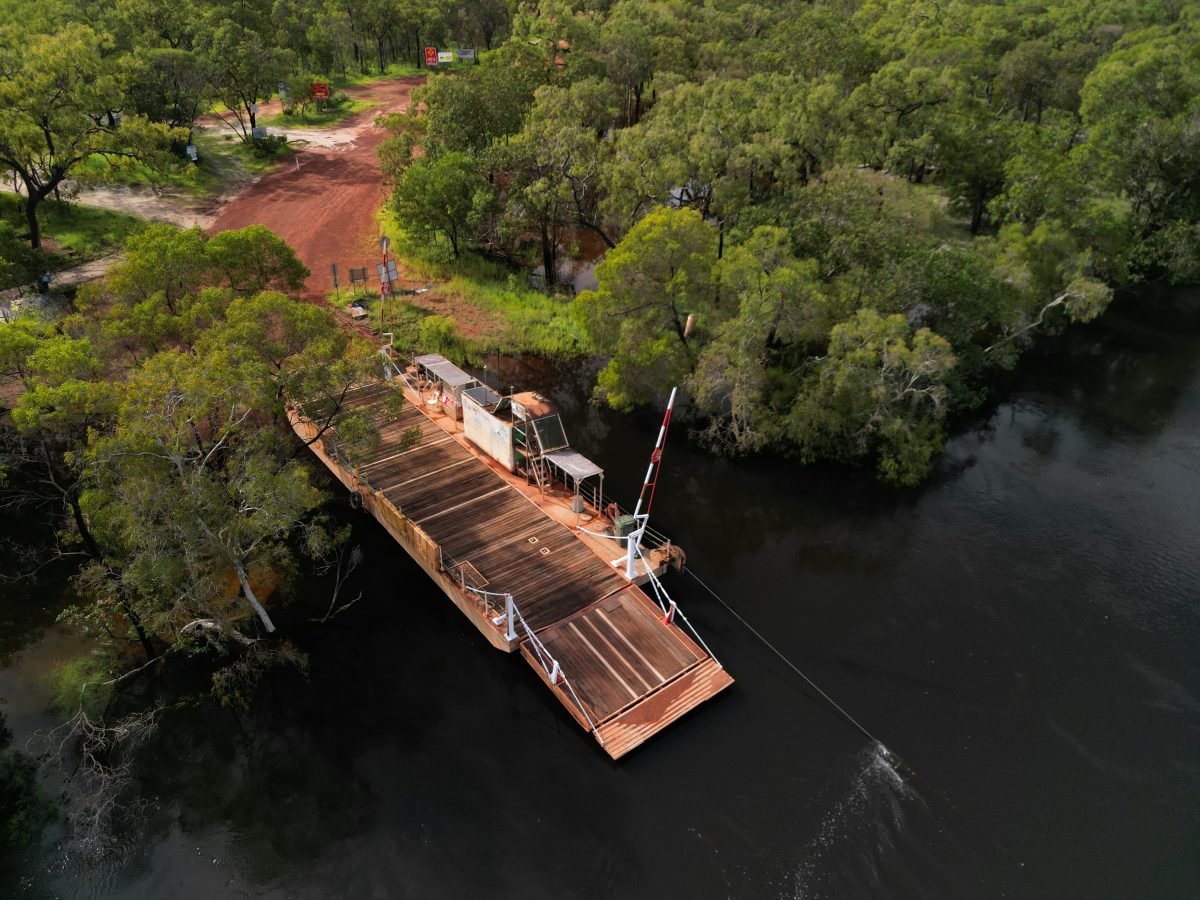
With the ferry not operating until the end of April 2024 due to major maintenance being required, questions about whether a bridge should span the Jardine River have reignited the seemingly age-old debate. Photo: Supplied.
The new mayor of the Northern Peninsula Area (NPA) says he is committed to collaborating with Traditional Owners to find a workable way to replace the region’s “bloody old” ferry with a bridge spanning the Jardine River.
Debate has raged for more than a decade about whether a bridge would be a more appropriate way than the existing ferry to connect the NPA with the rest of Cape York, but sustained opposition from the Traditional Owners has stopped any progression in its tracks.
The ferry is operated by Northern Peninsula Area Regional Council (NPARC) and will be out of service from 3-24 April for major maintenance, with the closure reigniting discussion about whether it is time to replace the ageing vessel with a bridge.
NPARC would not comment about the ferry on the basis it was still in caretaker mode following the 16 March local government election, but incoming mayor Robert Poipoi said he believed a bridge was the best long-term solution for the region.
“As soon as I find my feet, I’ll build that relationship with [Traditional Owners] and have that discussion about whether it’s time to look at the bridge,” he told Cape York Weekly.
“It’s bloody old; I was still going to school when they put that ferry in.”
Mr Poipoi acknowledged the sensitivities surrounding the construction of a bridge, but said the infrastructure would likely have a significant cost of living benefit to the NPA community.
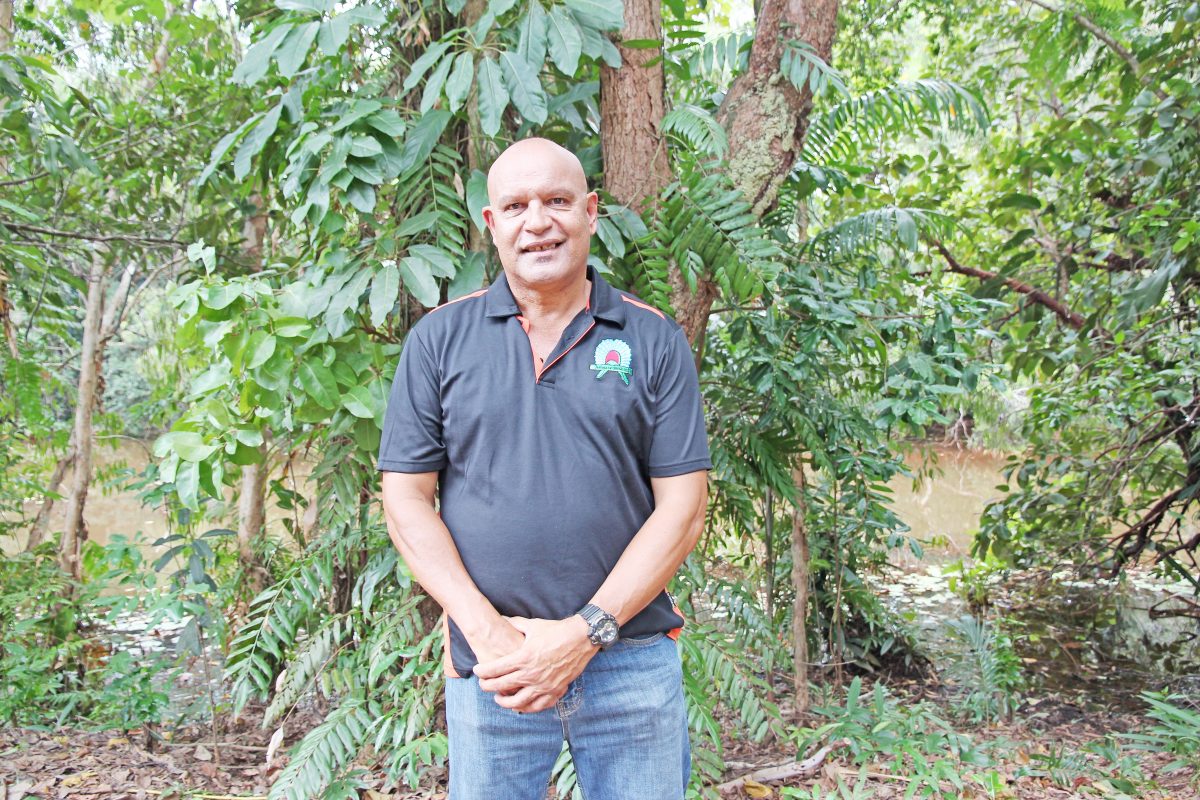
Newly-declared Northern Peninsula Area Regional Council mayor Robert Poipoi says while he acknowledges the historical and ongoing Traditional Owner opposition, he believes a bridge over the Jardine River would provide a cost of living win for NPA residents. Photo: Cape York Weekly.
Currently, road trains have to disconnect trailers and make multiple trips across the ferry to deliver goods north of the Jardine River, with the only other freight option being by sea.
“It’s a very sensitive one, because of the Traditional Owners here,” Mr Poipoi said.
“It’s a hard case; they’ve got the last say and it’s just very hard to negotiate that.
“I’m definitely all for the bridge.
“It’s going to drop the cost of living heaps.”
There has been government support for the impact a bridge spanning the Jardine River would have on residents and tourists, with the Federal Government committing $10 million towards its construction in 2015, and the State Government completing a business case in 2021.
A spokesperson for the Department of Transport and Main Roads (TMR) said the business case was based on information available at the time but did not progress due to a lack of support from Traditional Owners.
“The project investigated the replacement of the Jardine River ferry with a bridge and the benefits a bridge at this location would provide, including increased flood immunity, reduced travel times, improved safety and road link efficiency,” the spokesperson said.
“Notwithstanding the completion of the further planning required, the construction of a bridge currently remains unfunded.
“If support for the project was received, and both NPARC and [the] Australian Government requested TMR to progress this project, TMR could prioritise an upgrade at this location pending available funding.”
The area around the Jardine River crossing is managed by the Apudthama Land Trust (ALT) on behalf of Traditional Owners.
ALT chair Ugari Nona said opposition to the bridge was based on environmental concerns, as well as the potential a bridge had to create a spike in visitors that could pressure local resources.
“There’s been a lot of pushback not to have the bridge due to the influx of people coming across, and potentially drugs,” Ms Nona explained.
“That ferry’s been a way to monitor and protect what’s coming into community, and I think the other big [concern] is around the environment.
“One of the biggest scares for community is that if we put a bridge there, anyone will be able to come into community at any day, any time, any hour … that could lead to some problems.”
In 2021, NPARC estimated 80,000 tourists had visited NPA during the dry season, with industry figures suggesting up to 100,000 people could now make the trip to the northernmost point of Cape York every year.
Dave Hartwell, the owner of NPA-based tourism outfit Cape York Adventures, said the sheer number of tourists made the case for a bridge stack up from an emergency services perspective.
Paramedics and police responding to incidents south of the Jardine River currently have to use the ferry, with delays often experienced for after-hours callouts.
“If something happens the other side of the Jardine and it’s after five thirty, it can be a major delay in getting down to treat someone,” Mr Hartwell said.
He added a toll system on the bridge could help alleviate concerns surrounding the loss of income if the ferry were to be scrapped.
NPARC currently charges tourists $130 to cross the Jardine River in a car, while those towing trailers or caravans are slugged $205.
NPA residents are charged $60 to use the ferry, meaning they must pay to return home if leaving the region by road.
“I think to have a bridge, you could still do a toll,” Mr Hartwell said.
“Most of the bridges in capital cities have tolls on them, so I don’t see why they can’t do it up here.”
Ms Nona said while opposition to a bridge remained, she accepted it would positively influence the cost of bringing goods into the NPA.
“Probably half of Traditional Owners or less want a bridge; the majority don’t want one,” she said.
“It will ease freight and we all talk about it, but at the end of the day, we have to respect the Traditional Owners and what they want.”
The ALT chair added she understood the frustration of visitors to the region with the peak season queue times to cross the Jardine River.
“We as community members, we [are] in the same queue as the tourists and everyone else,” Ms Nona said.
“The frustration they feel, we feel as well.”

Currently, the ageing Jardine River ferry – which will be out of action until 24 April for major maintenance – is the only infrastructure linking the Northern Peninsula Area with the rest of Cape York. Photo: Supplied.


